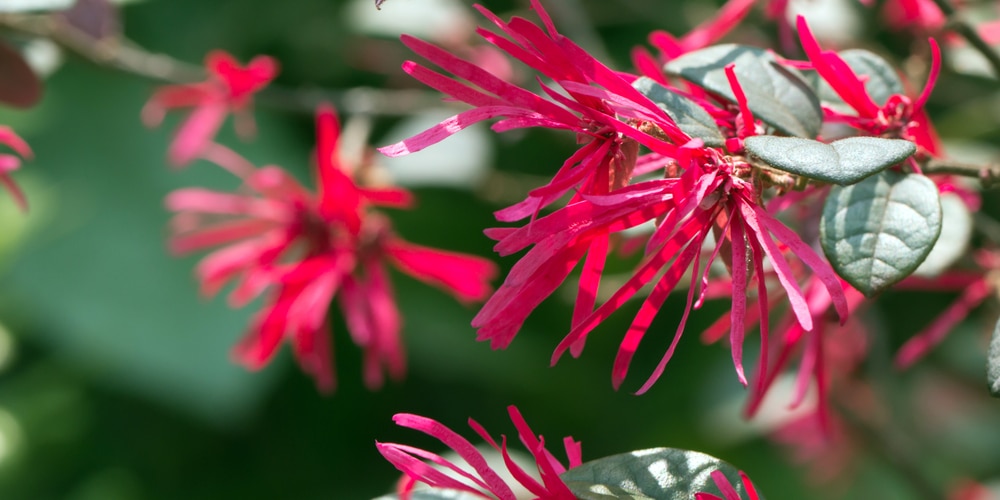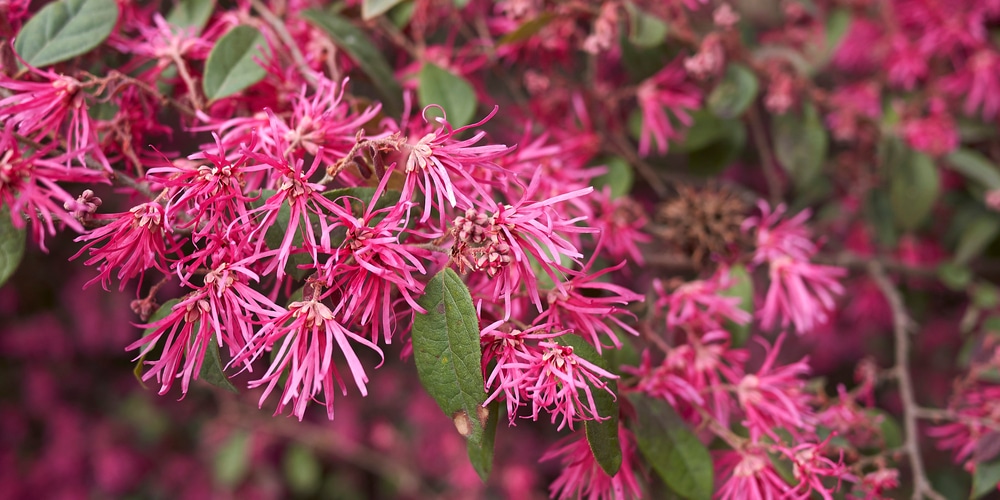Loropetalum is characterized by its beautiful, pendulous flowers and lush foliage. Its vivid purple leaves and cascading clusters of pink flowers add a touch of elegance and sophistication to any outdoor space. Loropetalum is an evergreen shrub that belongs to the Hamamelidaceae family. It is native to southwestern China and can grow up to 15 feet tall. You may be wondering when to prune loropetalum.
This plant is relatively easy to care for, and you can keep it looking its best by pruning it regularly. By pruning this plant, you can control its size and shape. You can also encourage the plant to produce more flowers by doing so.
When to Prune Loropetalum

The best time to prune the plant is in late Spring or early Summer after it has finished flowering. If you prune at any other time of the year, you risk removing the buds that will produce next season’s flowers. Pruning at this time will encourage the plant to have more flowers next season.
How to Prune Loropetalum
Proper pruning is one of the most important aspects of keeping the plant healthy and looking its best. Luckily, it is relatively easy to prune, and with a bit of care and attention, it can thrive for years. Here is a step-by-step guide on how to prune your Loropetalum:
1) Determine Size
The first step to pruning your Loropetalum is determining the plant’s size. This shrub can grow anywhere from three to ten feet tall, so it’s important to know how big yours is before you start trimming. If your Loropetalum is on the smaller side, you’ll want to be careful not to over-prune it.
On the other hand, if it’s on the larger side, you may need to do some heavy pruning to keep it under control. Either way, it’s best to err on the side of caution and only remove a few inches at a time.
2) Pruning Methods
Once you’ve determined the size of your plant, you can begin pruning. There are two main methods for pruning your plant: heading back and thinning out.
Heading back involves cutting back all of the stems to a uniform length. This method is typically used to control the size of the shrub. Thinning out involves selectively removing individual stems. This is often used to improve the shrub’s air circulation and sunlight exposure.
3) Tools
The next step in pruning your plant is to gather the proper tools. You will need a pair of sharp pruning shears and a small saw for larger branches. Having a ruler or tape measure on hand is also helpful to ensure that you are making precise cuts.
4) Selecting Which Branches to Cut
Once you have your tools, you must decide which branches to trim. Start by assessing the plant’s overall shape and remove any dead or damaged branches. You should also remove branches crossing or rubbing against each other. Next, look at the remaining branches and decide which ones need to be trimmed to achieve the desired shape.
5) Making the Cut
When ready to make the cut, use the appropriate cutting tool to remove the branches. Always make clean cuts at a 45-degree angle above a set of leaves. This will help the plant heal quickly and encourage new growth. Avoid tearing or jagged cuts as these can damage the plant.
After you have made the cuts, step back and take a look at your handiwork. Make sure that you are happy with the plant’s shape and that all of the cuts are clean and even.
6) After The Cut
Once you have finished pruning your plant, it’s important to give it the proper care to ensure it continues to thrive. Immediately after pruning, water the plant deeply to help it recover from the stress of being trimmed. You should also apply a light layer of fertilizer to help encourage new growth.
Lastly, keep an eye on the plant and remove any dead or damaged leaves that may appear.
Final Thoughts
Loropetalum is a relatively easy plant to care for, and pruning is integral to that care. You can ensure that your Loropetalum will stay healthy and look great in your garden by having the right tools and doing the correct methods. With a bit of time and attention, you can have a thriving shrub that will add beauty to your home.

